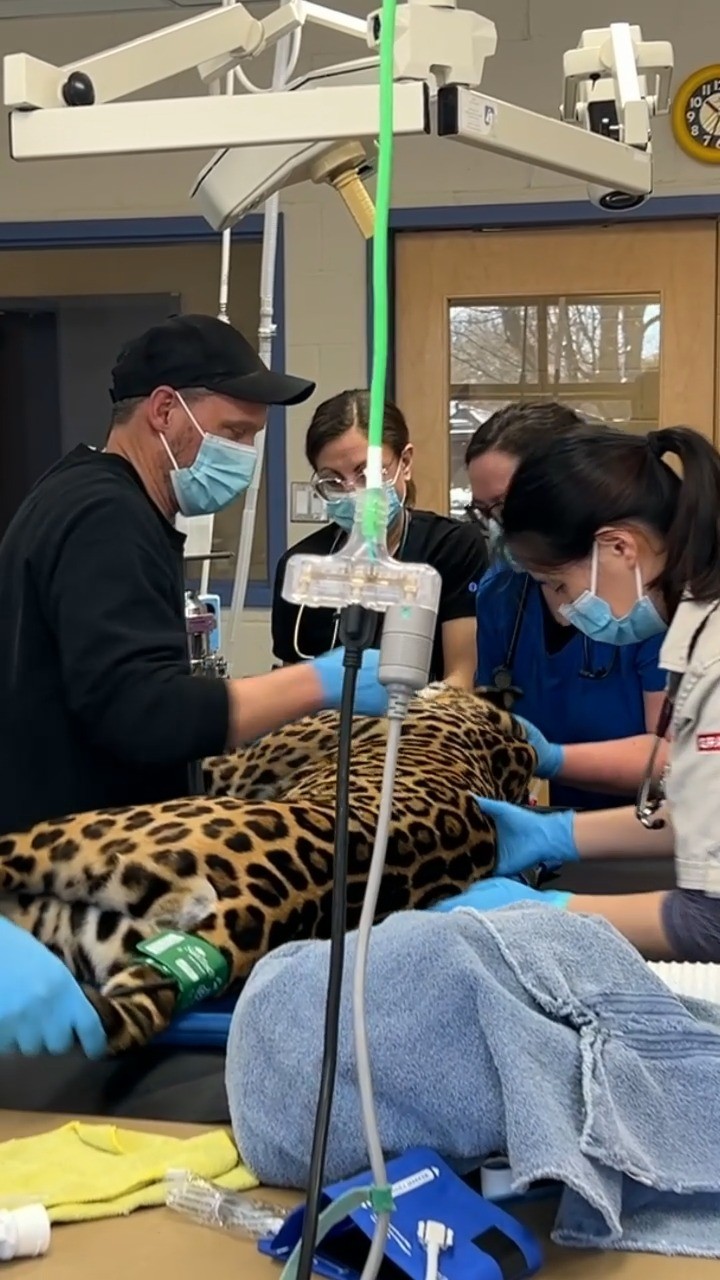- The life and growth of Lua, a jaguar born and raised in the zoo environment.
- The pre-departure veterinary examination process for zoo animals.
- The significance of Lua’s move for conservation efforts and species preservation.
- Challenges faced by the jaguar population due to deforestation in the Amazon.
- The role of zoos in wildlife conservation and breeding programs.
Elle est née au Zoo, nous l’avons vu grandir sous nos yeux, et maintenant la femelle jaguar Lua joue un rôle essentiel dans l’effort mondial de conservation. Born in captivity, Lua’s journey from a playful cub to a 5-year-old adult highlights the critical role zoos play in both nurturing individual animals and supporting broader conservation initiatives.
As Lua prepares for her new home, she undergoes a thorough veterinary examination. This process is fundamental to ascertain her health and readiness to travel. Such examinations include blood tests, dental check-ups, and sometimes imaging (like X-rays or ultrasounds), tailored to ensure the animal’s wellbeing. Receiving institutions may require specific tests, emphasizing the tailored nature of each examination, vital for obtaining the necessary transfer permits.
The move is significant not only for Lua but also for the preservation of her species. Leopards, especially in South America, face grave threats from habitat destruction, primarily in the Amazon. By facilitating such transfers, zoos aim to strengthen gene pools and support breeding within new environments. The hope is that Lua will pair with a young male and contribute to the survival of jaguars, classified as near-threatened due to deforestation and human encroachment.
Zoological parks are pivotal in wildlife conservation. Beyond serving as breeding centers, they educate the public about various species and their challenges. They engage in scientific research and develop strategies to protect animal habitats. Lua’s story echoes the importance of these efforts, serving as a reminder of the intricate relationship between conservation science and practical action.
Zoos act as sentinels of nature’s diversity, places where humans can connect with wildlife in meaningful ways. In fostering communication and understanding about threats to species like the jaguar, they also rally support for broader environmental initiatives. Lua’s journey is more than a move—it’s a beacon of hope for both conservationists and animal lovers worldwide, illustrating how targeted efforts can make a lasting impact on the preservation of our planet’s biodiversity.
*****
Source Description
👶 Elle est née au Zoo, nous l’avons vu grandir sous nos yeux, et maintenant la femelle de 5 ans nous quitte pour la suite de ses aventures!
La femelle jaguar Lua a subit récemment son examen vétérinaire pré-départ, un passage obligé visant à s’assurer de l’état de santé général de l’animal et qu’il est apte à entreprendre son périple. ✈️
💉 Certains examens peuvent être exigés de l’institution qui reçoit, alors que d’autres sont nécessaires pour l’obtention des autorisations de transfert.
🐆 Lua sera rejointe par un jeune mâle avec qui elle formera un couple et qui, souhaitons-le, poursuivra les efforts de reproduction chez cette espèce. Le jaguar est le plus grand félin en Amérique et une espèce quasi menacée, notamment en raison de la destruction des forêts amazoniennes.🌴
Lua a-t-elle gagné son billet de départ suite à son examen médical? La réponse, dans la vidéo!


